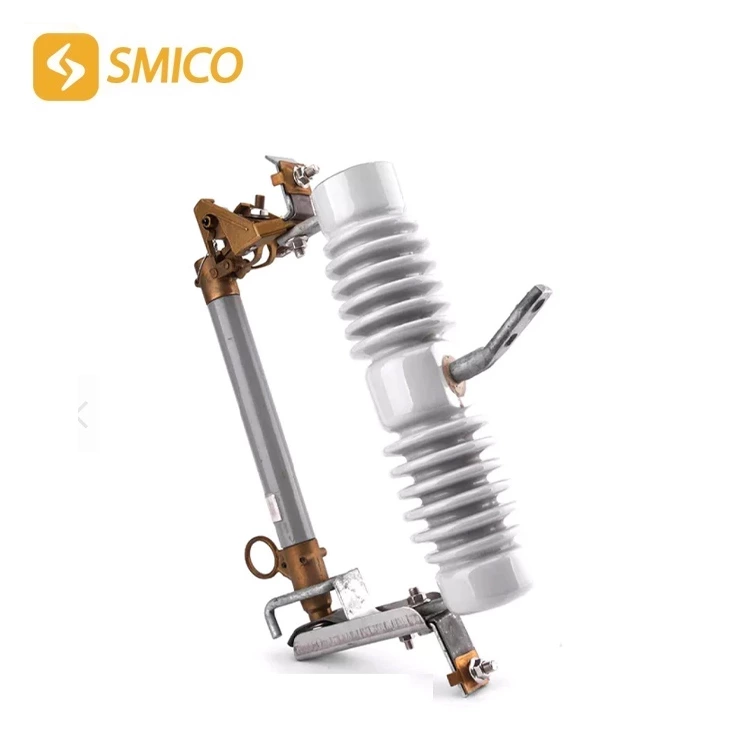Structure And Working Principle Of Drop-out Fuse
The structure and working principle of the ejector type drop out type fuse
The dropout fuse of transformer is composed of an outer arc extinguishing tube, an inner arc extinguishing tube, a fuse and a tail wire ejection device. Among them, the outer arc extinguishing tube is composed of an epoxy glass fiber cloth tube and a white steel paper tube, which mainly plays the role of insulation, explosion resistance and effective interruption of rated capacitive current; the inner arc extinguishing tube can gather non-combustible gas with sufficient pressure at the moment of interruption to improve the interruption capacity, so it is used to interrupt small capacitive current. The tail wire ejection device is divided into an external spring type and an anti-swing type structure according to different application conditions. The anti-swing type structure is divided into two types according to the different placement forms of the matching capacitors, which are suitable for the vertical placement of capacitors and the horizontal placement of capacitors. The external spring type uses a stainless steel spring as the tension spring of the expulsion drop out fuse fuse. When the fuse drop outworks normally, the spring is in a tensioned energy storage state. When the fuse is overcurrent and blown, the spring releases energy, so that the residual tail of the fuse is quickly pulled out of the external arc extinguishing tube, and the gas generated by the internal and external arc extinguishing tubes extinguishes the arc when the current passes through zero, ensuring that the faulty capacitor is reliably separated from the system. This structure is generally used in frame-type capacitor sets. The anti-swing structure is to change the external spring into an internal tension spring structure with an insulated anti-swing tube, that is, the spring is built into the anti-swing tube, and the fuse is connected to the capacitor terminal after being tightened and fixed by the tension spring. When the fuse is overcurrent and blown, the energy of the tension spring that has been stored is released, and the residual tail is quickly pulled into the anti-swing tube. At the same time, the anti-swing tube moves outward under the action of the auxiliary torsion spring at the fixed point, which also promotes the rapid expansion of the fracture, ensuring the reliable breaking of ht drop out fuse. The anti-swing tube prevents the residual tail from colliding with the capacitor mesh door and cabinet door, eliminating safety hazards.

